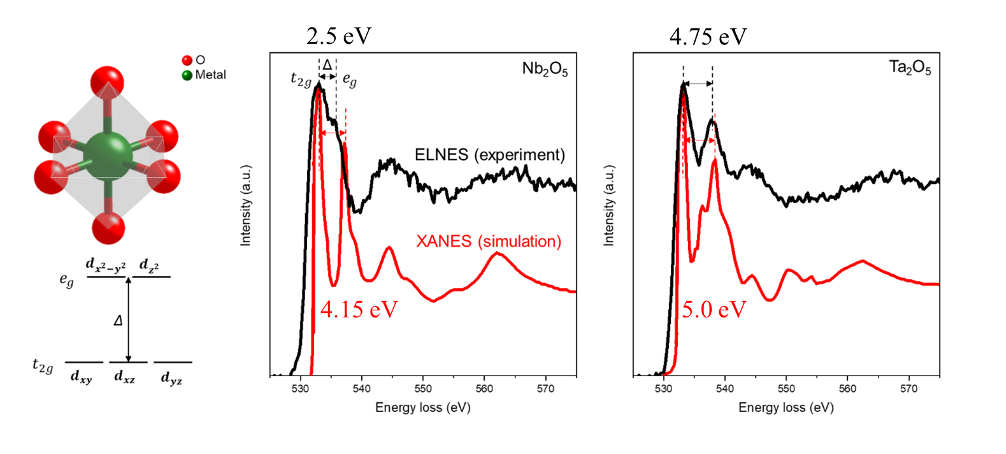Revealing why Tantalum Oxide is Less Lossy than Niobium Oxides
SQMS scientists unravel the structural difference and formation mechanism of tantalum and niobium oxides in superconducting qubits
The Science:
The lifetime of qubits, a critical factor in fault-tolerant quantum computing, is significantly influenced by the choice of materials in superconducting quantum circuits. Recently, SQMS scientists have enabled systematic improvements in T1 relaxation times of transmon qubits by encapsulating niobium (Nb) with tantalum (Ta).[MK1] This follow-up study clarifies the formation mechanisms and structural differences between tantalum and niobium oxides using a comprehensive approach that combines different structural characterization methods and thermodynamic calculations. We show that tantalum oxide forms fewer suboxides than niobium oxide. More importantly, amorphous tantalum pentoxide (Ta2O5) exhibits a bonding nature closer to crystalline counterpart than amorphous niobium does to its closest stable crystalline form (Nb2O5), potentially hindering hydrogen diffusion and reducing two-level systems defects that contribute to decoherence.

The Impact:
Understanding the structural and chemical properties of surface oxides is crucial for superconducting qubit performance improvement. The insights gained on the nature of surface oxides from this research address current gaps in understanding low-loss TaOx properties, creating a foundation for subsequent in-depth theoretical investigations to further validate these findings.
Summary:
Structural and chemical investigations were conducted on the metal-air interface to elucidate the reasons behind coherence time improvement when utilizing native TaOx instead of native NbOx. Our comprehensive approach, combining scanning transmission electron microscopy, electron energy loss spectroscopy (EELS), time-of-flight secondary ion mass spectrometry, X-ray photoelectron spectroscopy, and thermodynamic calculations, elucidates the formation mechanism and low-loss nature of TaOxcompared to NbOx. We observed an abrupt transition from Ta2O5 to Ta metal, contrasting with the gradual valence state transition from Nb2O5 to Nb metal in native NbOx. The calculated phase diagram and oxygen chemical potential between Nb-O and Ta-O systems well explain this disparity. In addition, we discovered a closer crystalline bonding nature in amorphous Ta2O5 than in Nb2O5. We attribute this distinction as another potential origin for the enhanced T1 of Ta or Ta-capped Nb superconducting qubits.
Contact:
Lin Zhou – linzhou@ameslab.gov
Focus Area:
Materials for 2D and 3D Quantum Devices
Institutions:
Ames National Laboratory, University of Virginia, Fermi National Accelerator Laboratory, Northwestern University, Rigetti Computing, Illinois Institute of Technology, Iowa State University
Citation:
Oh, J.-S. et al., Structure and Formation Mechanisms in Tantalum and Niobium Oxides in Superconducting Quantum Circuits. ACS Nano 2024, 18, 30, 19732–19741
https://pubs.acs.org/doi/10.1021/acsnano.4c05251
Funding Acknowledgment:
This work was supported by the U.S. Department of Energy, Office of Science, National Quantum Information Science Research Centers, Superconducting Quantum Materials and Systems Center (SQMS) under contract No. DE-AC02-07CH11359. All electron microscopy and related work were performed using instruments in the Sensitive Instrument Facility in Ames National Lab. The Ames National Laboratory is operated for the U.S. Department of Energy by Iowa State University under Contract No. DE-AC02-07CH11358. We acknowledge Research Computing at the University of Virginia for providing computational resources and technical support that have contributed to the results reported within this manuscript. We also thank the Rigetti fab team members for the processing development and fabrication of studied specimens.
